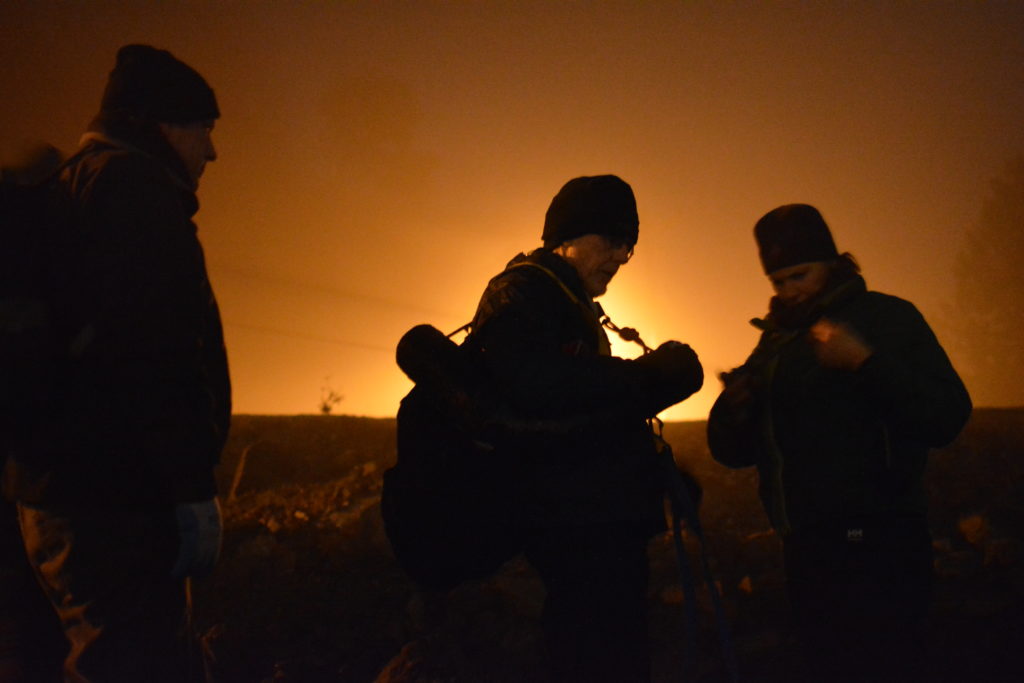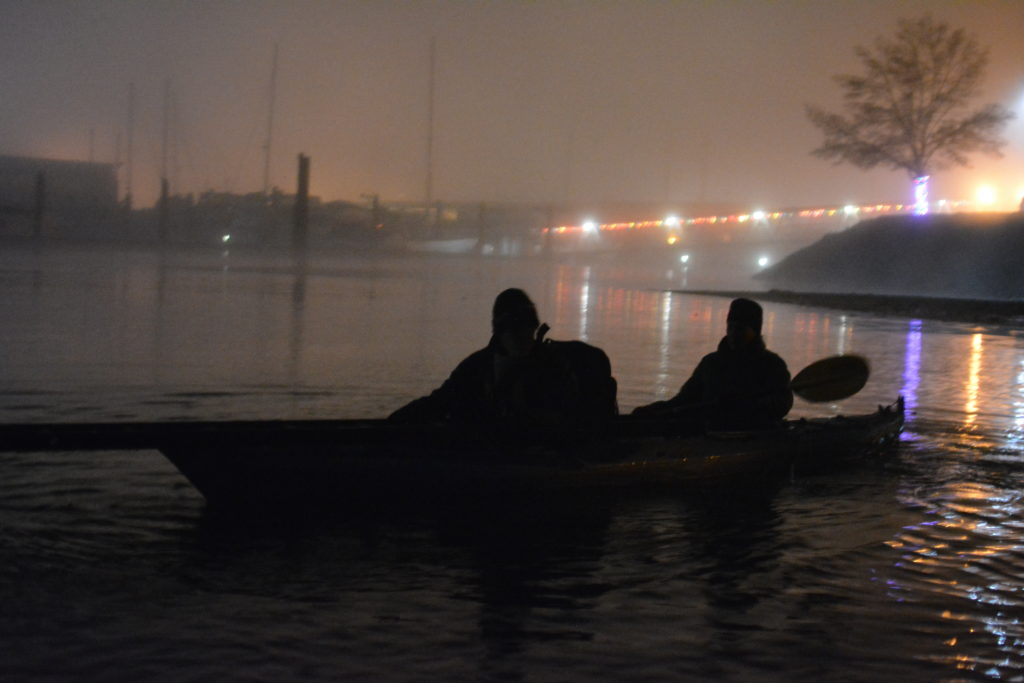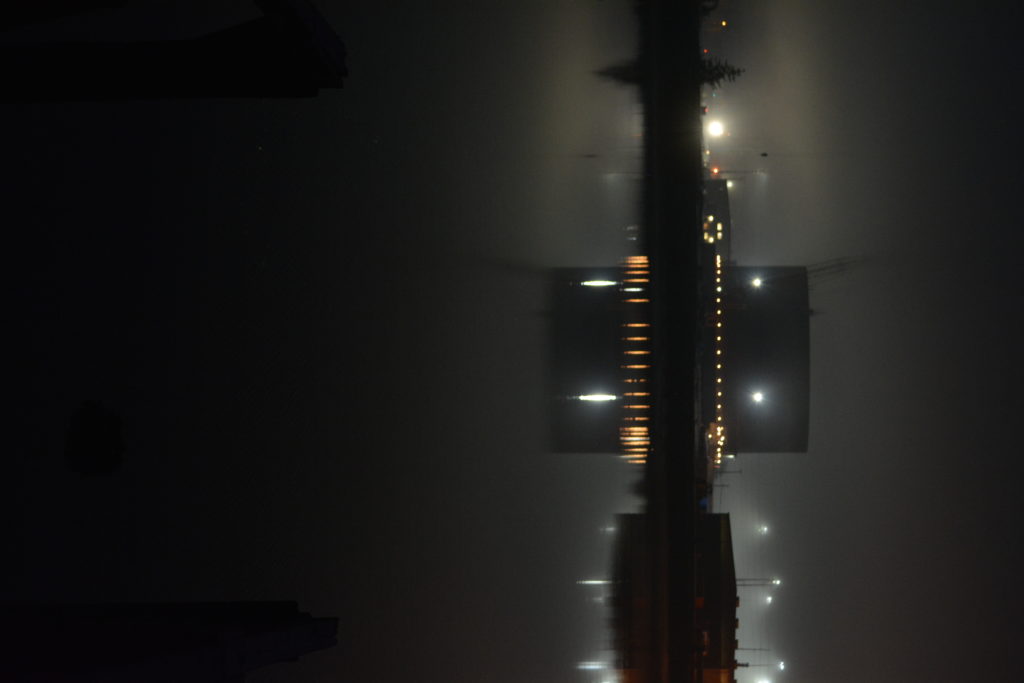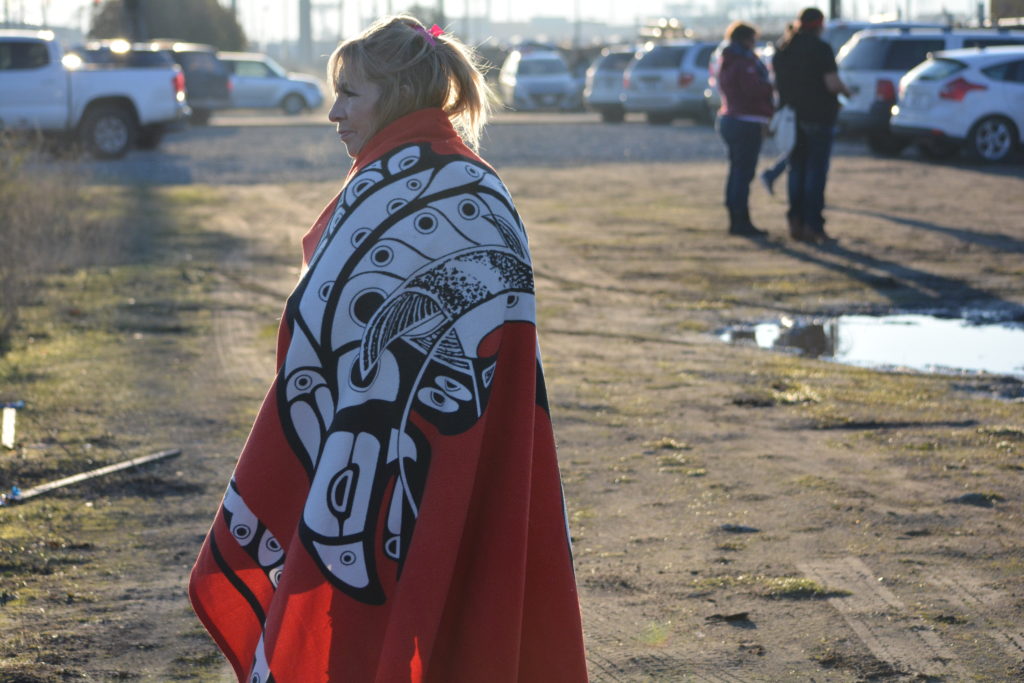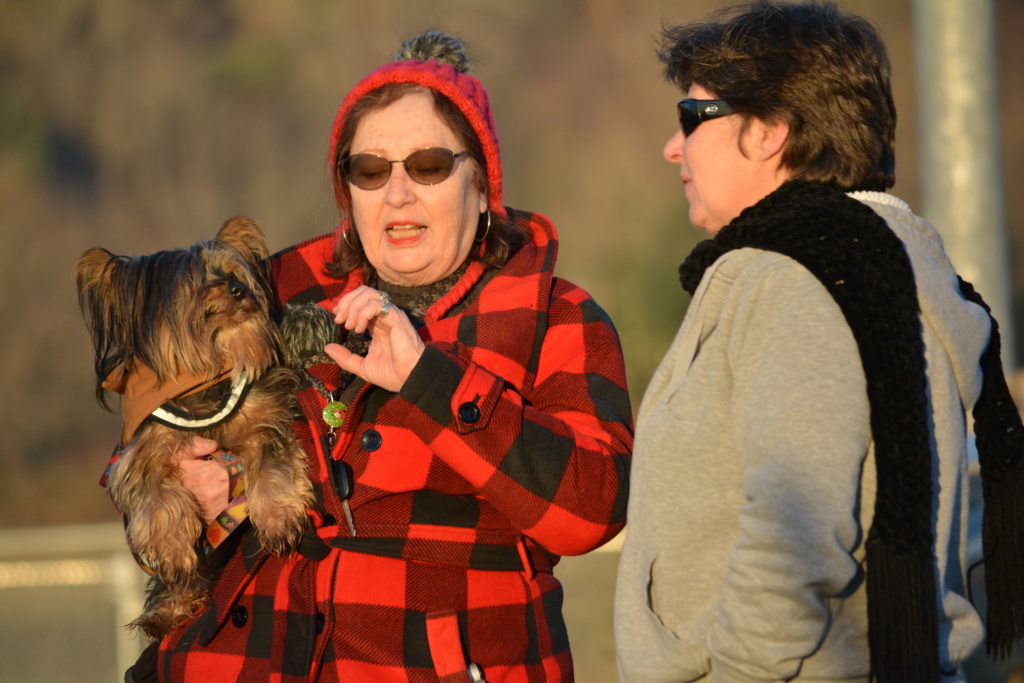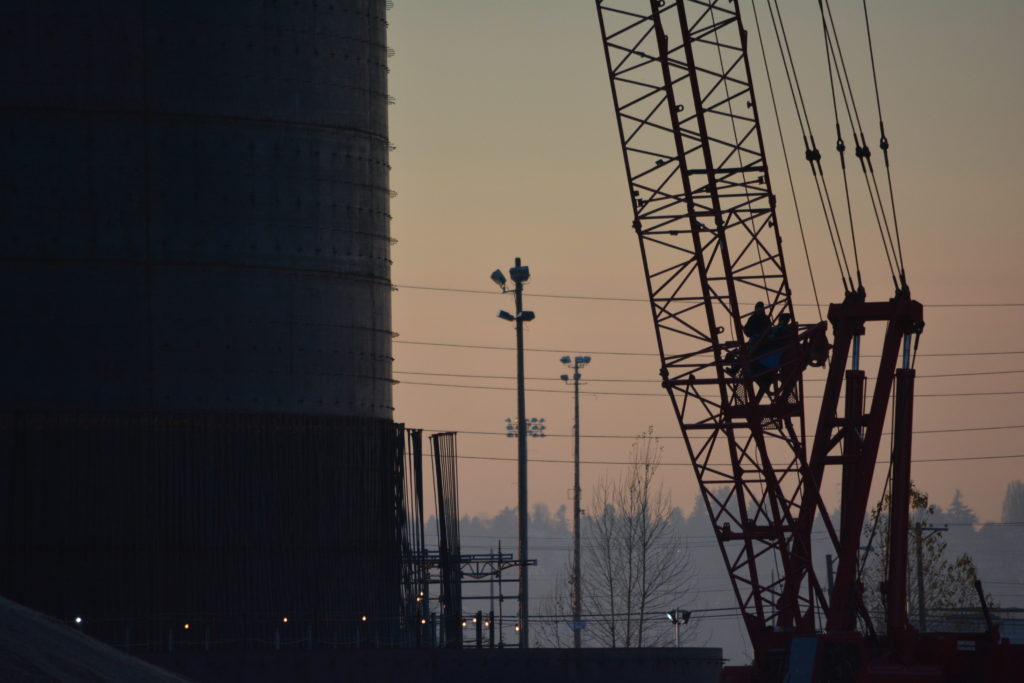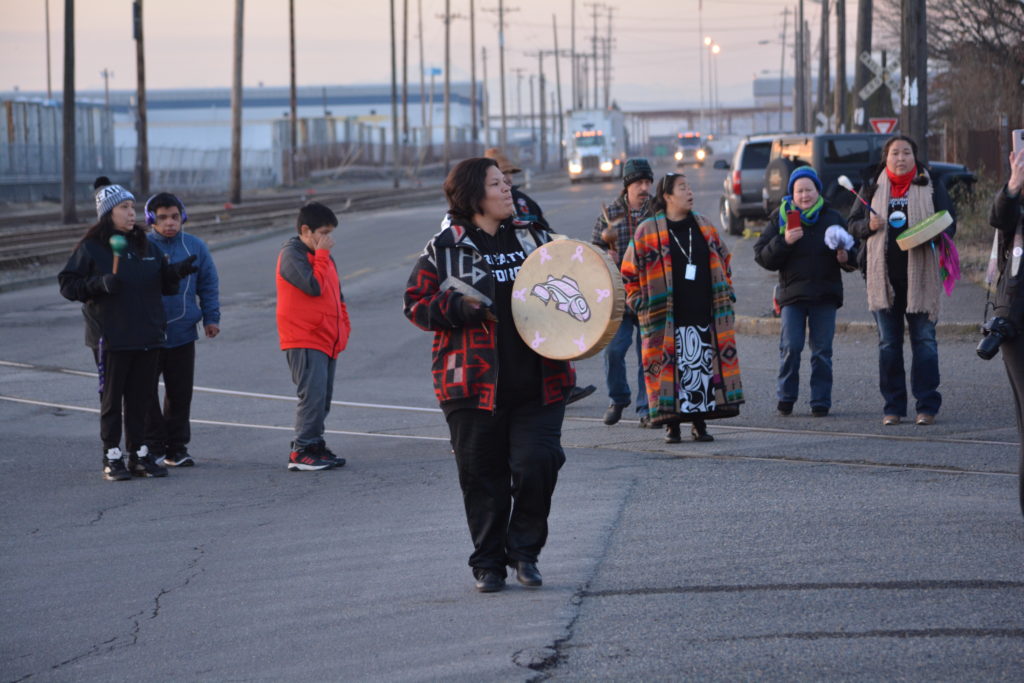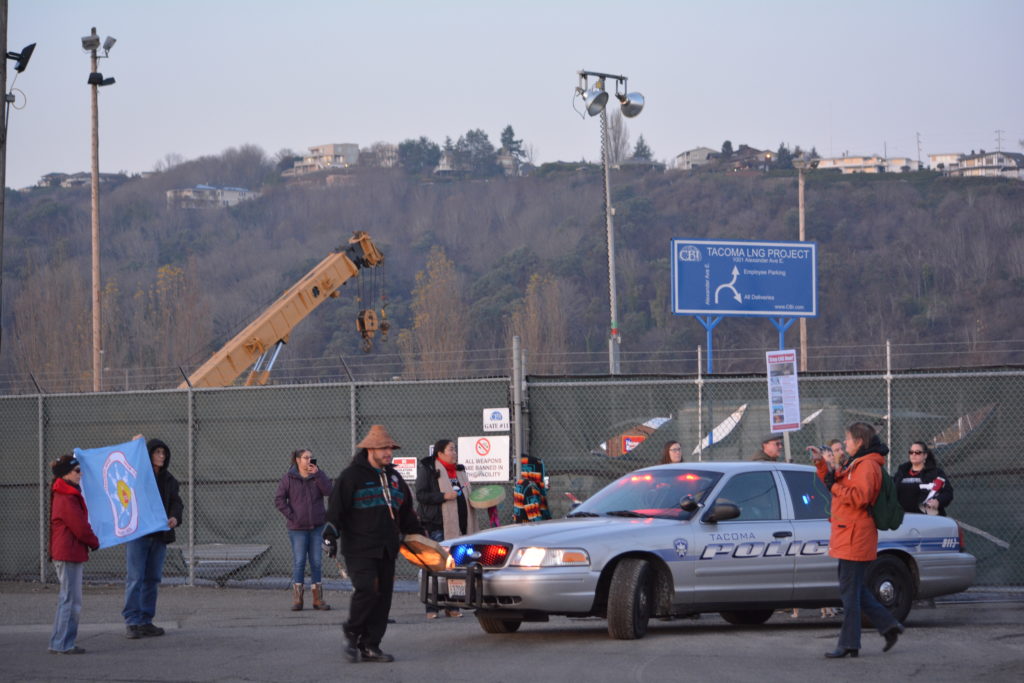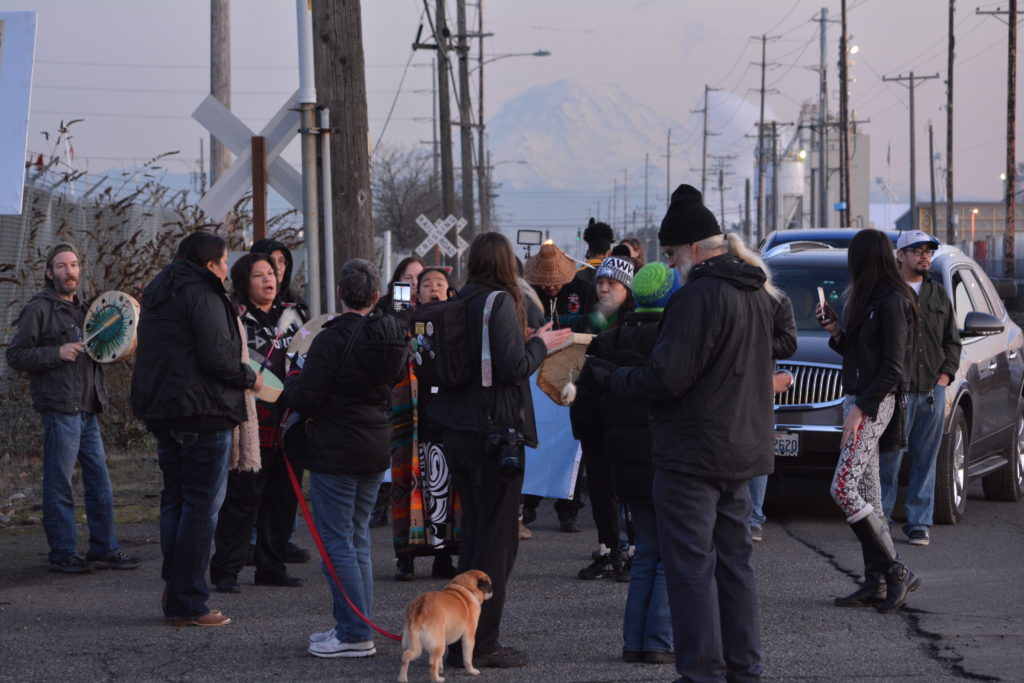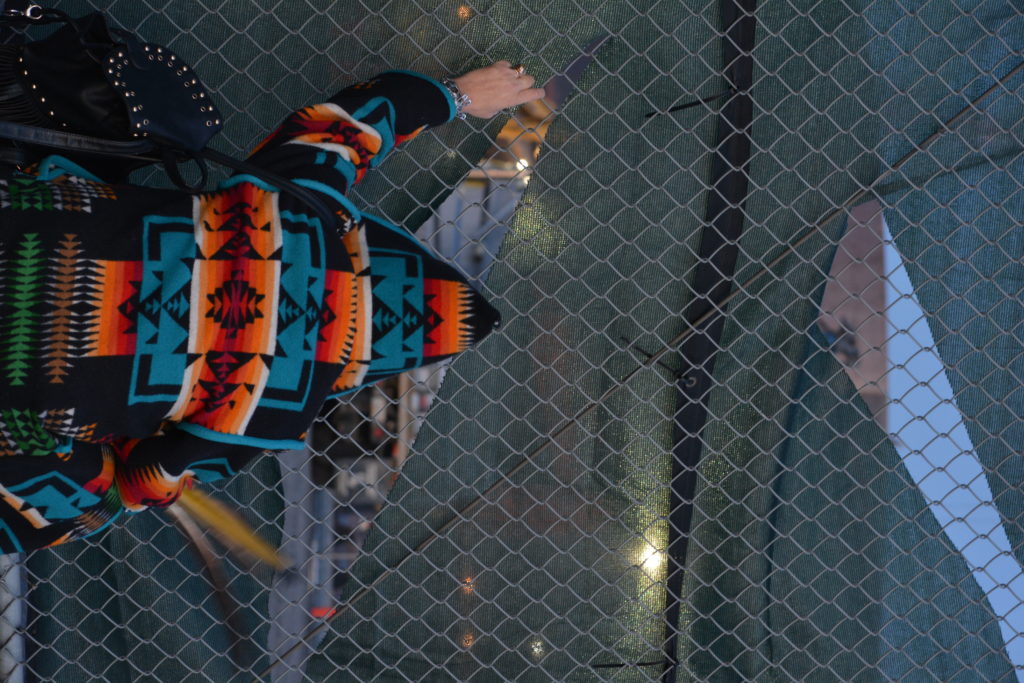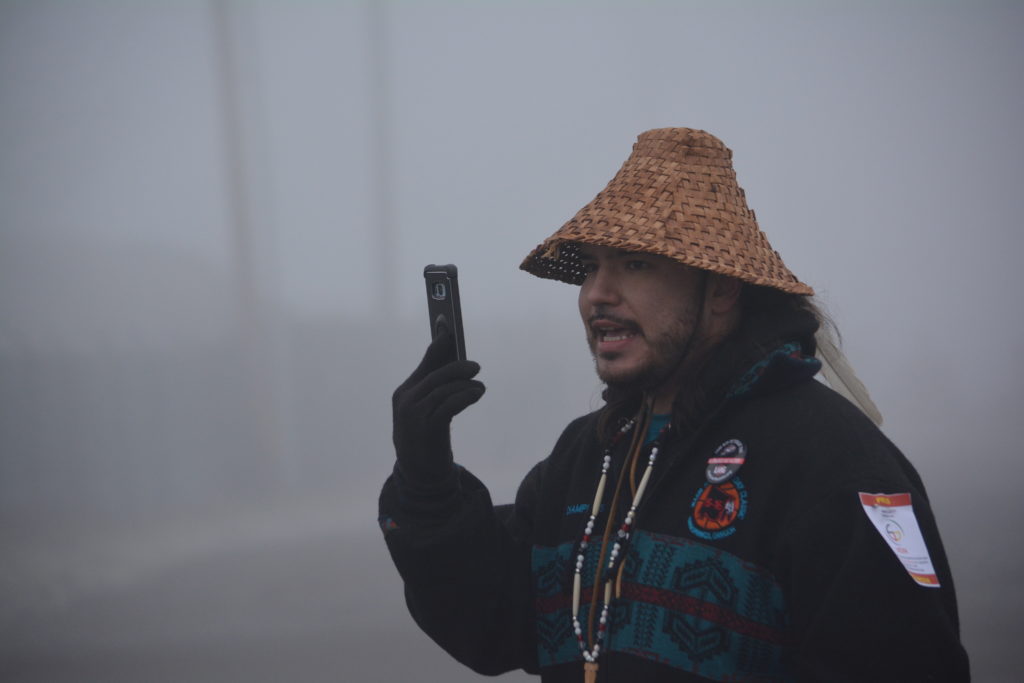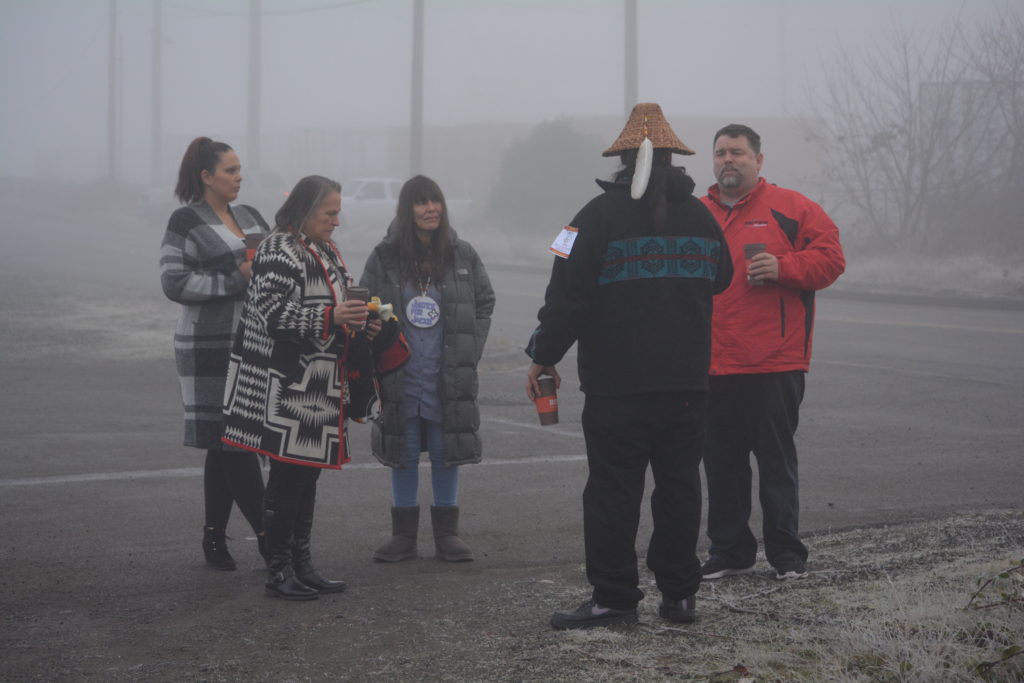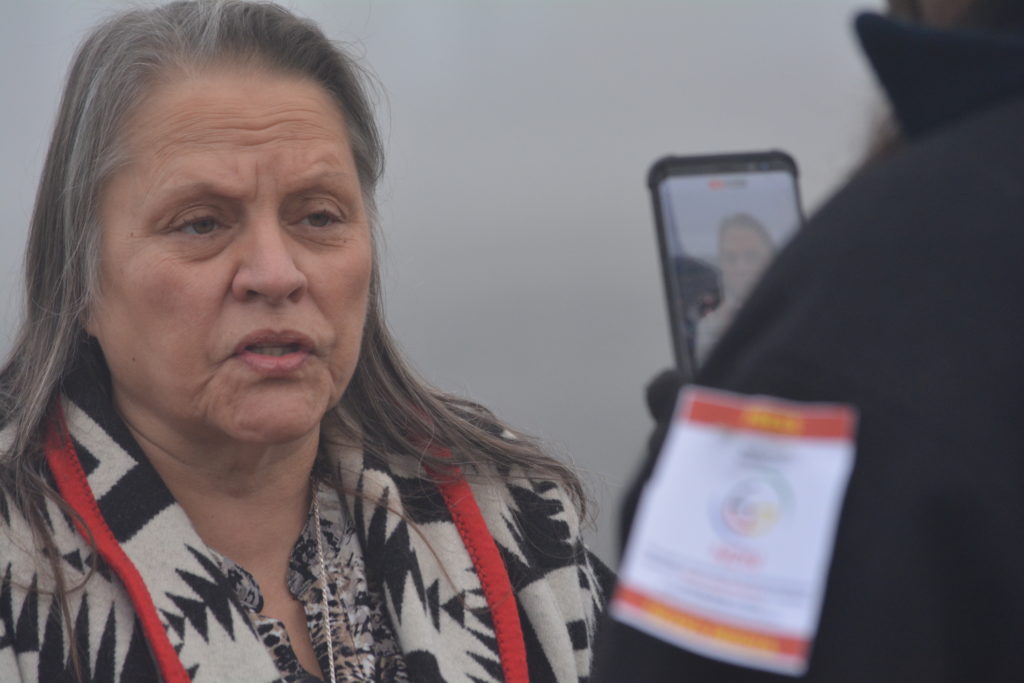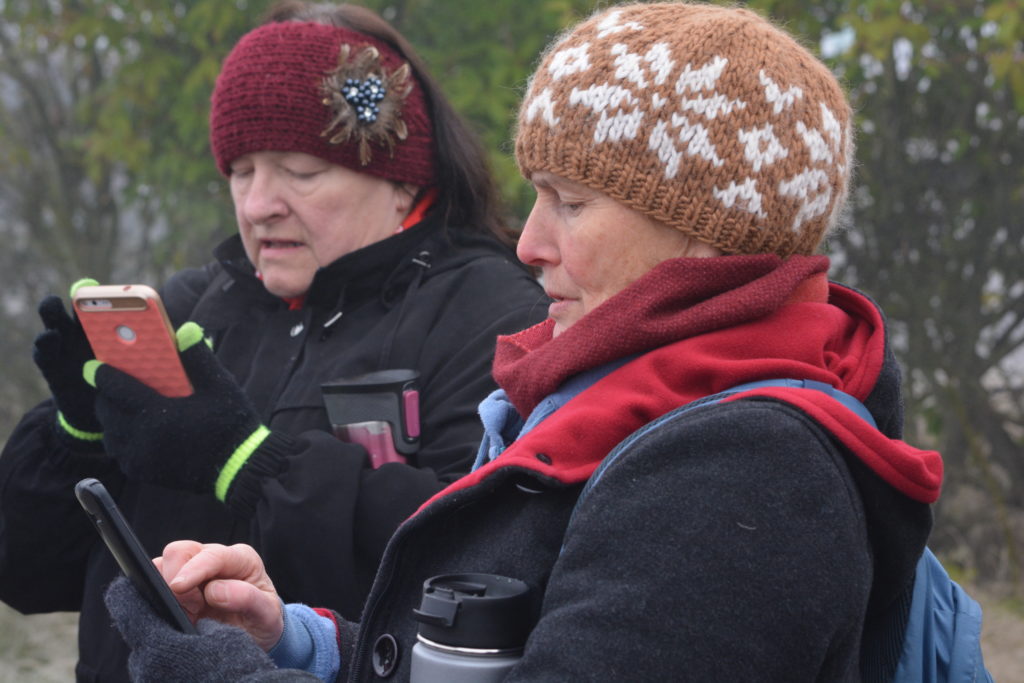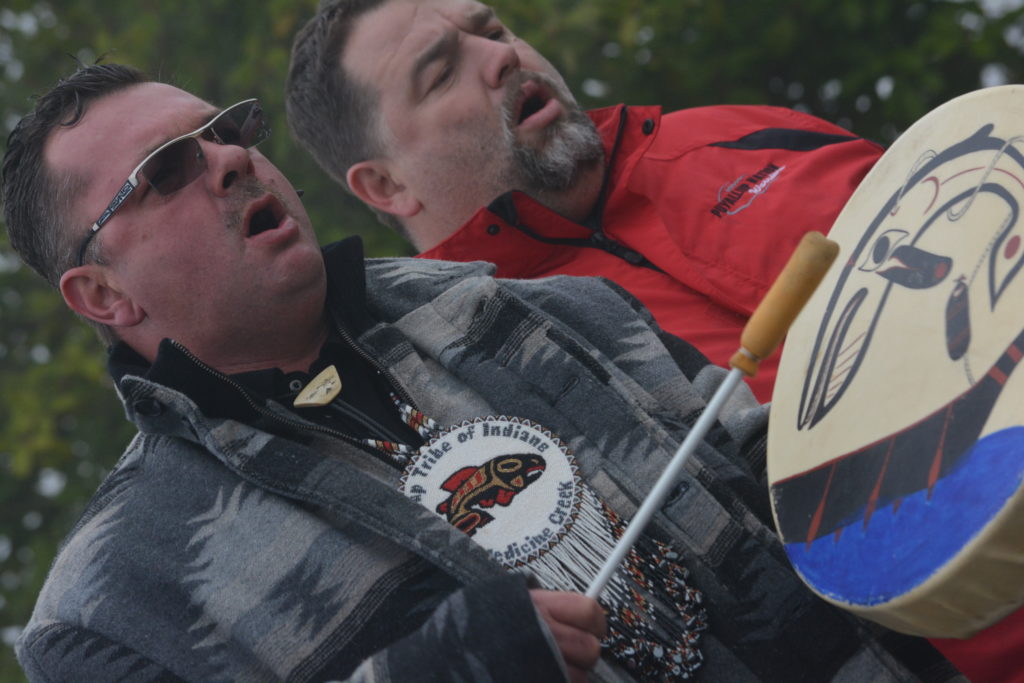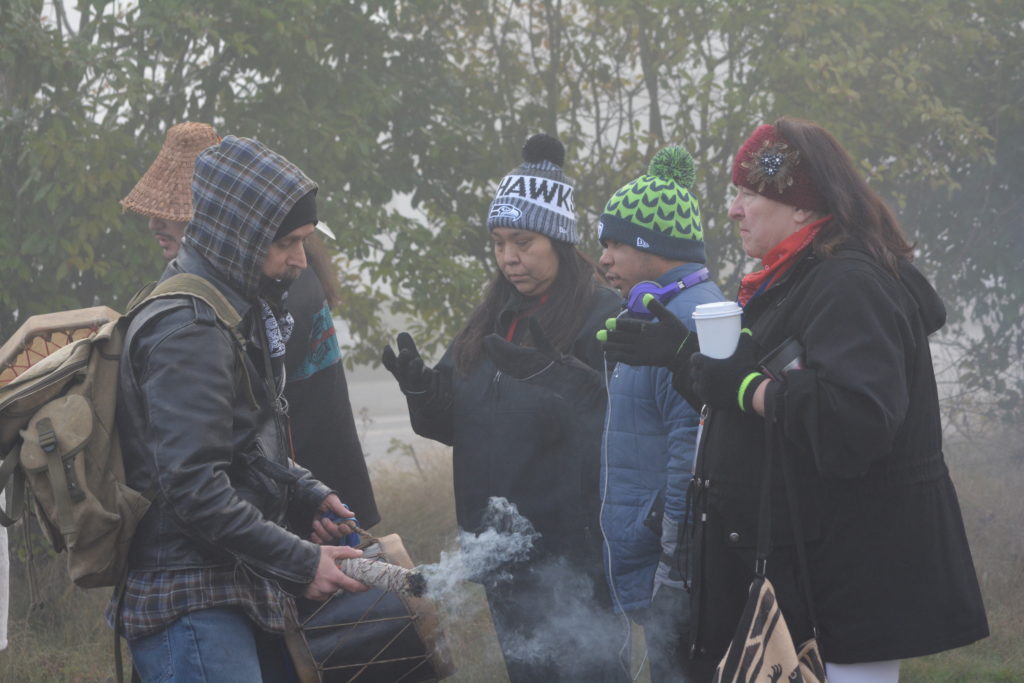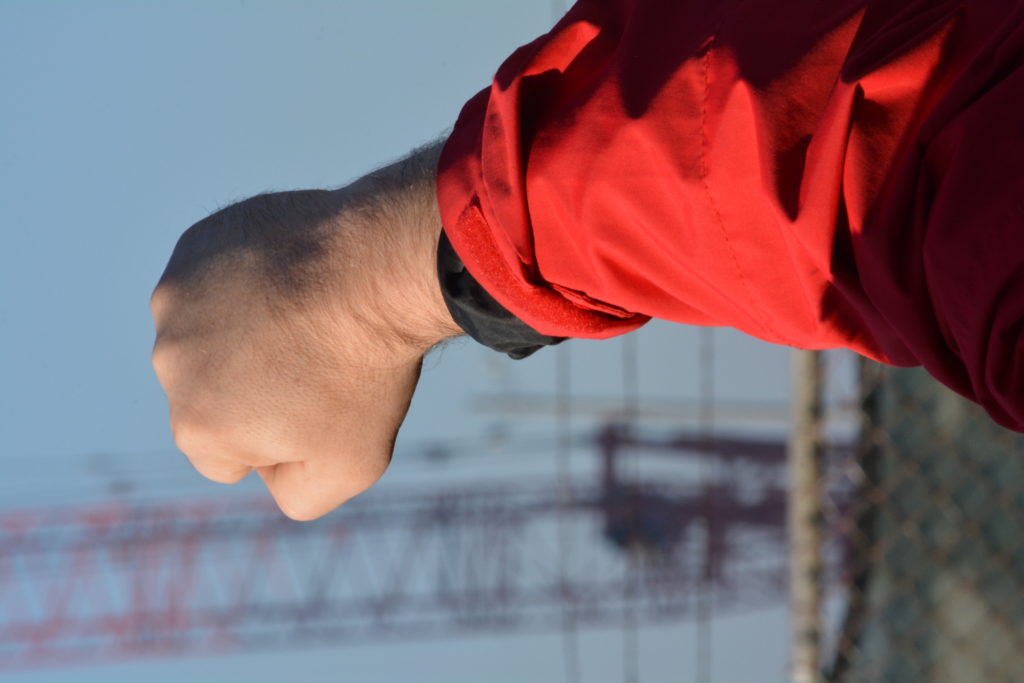By Steve Way
Before dawn on December 11th, my friend Carlo and I made our way onto Puyallup Tribal property currently misappropriated by Puget Sound Energy’s LNG construction site on the Tacoma Tideflats. We were there to help stop construction of the unneeded fossil fuel facility. The morning was foggy and we had no trouble reaching the construction crane and making our way to the top of the operator’s cab. The morning was also cold and the crane arm’s framework was frosty. We had safety harnesses, took our time and made our way to a small “platform” of piping about 60 feet off the ground.
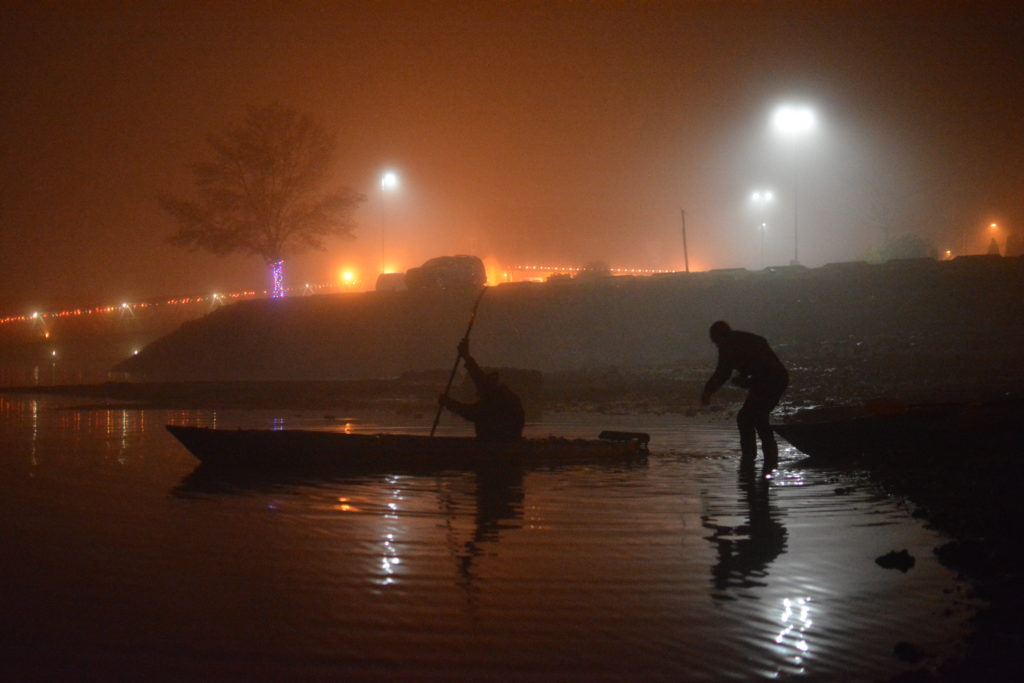
Undetected, we settled in. We each sat on a double layer of foam padding, tied our packs to the crane’s framework, radioed friends that we had arrived and got “comfortable.” Workers drifted in and, after a while, we had to shout down to people on the ground, letting them know we were up on the crane and to please not start putting it to use.
Before long a Tacoma Police Department cruiser pulled in below us and an officer got out and yelled up, “Hey dumb _______, get down from there.” He was soon joined by more patrol cars and units from the Tacoma Fire Department. A very professional firefighter came up in a cherry picker, made sure we were securely fastened to the crane and departed. Carlo and I had carried up a “lockbox” into which we could each insert an arm, making it virtually impossible for us to be removed. A “negotiator” arrived and realized that we were not about to come down. We agreed to be removed voluntarily at the end of the work day. The negotiator tried one more time, a police officer came up in the cherry picker, and we were informed that we would be arrested.
Life on the crane
Workers gradually returned to their jobs, but the crane was out of commission for the day. We deployed a beautiful banner which, because of thick fog, was unseen by the outside world. Before long we heard drumming and singing coming through the fog from the adjacent roadway and knew that friends were out there somewhere. Very gratifying. We snacked, chatted, occasionally communicated with the outside world via phone or walkie-talkie and hoped the fog would clear enough to allow a photograph or two. Finally, a police officer came up in the cherry picker and took our beautiful banner. We had secured it tightly and did not have time to unhook ourselves, reattach a harness, make our way to the far end of the banner and untie it. Half an hour later, the fog lifted. We deployed a smaller backup banner and, as it turned out, a drone was able to get good video.
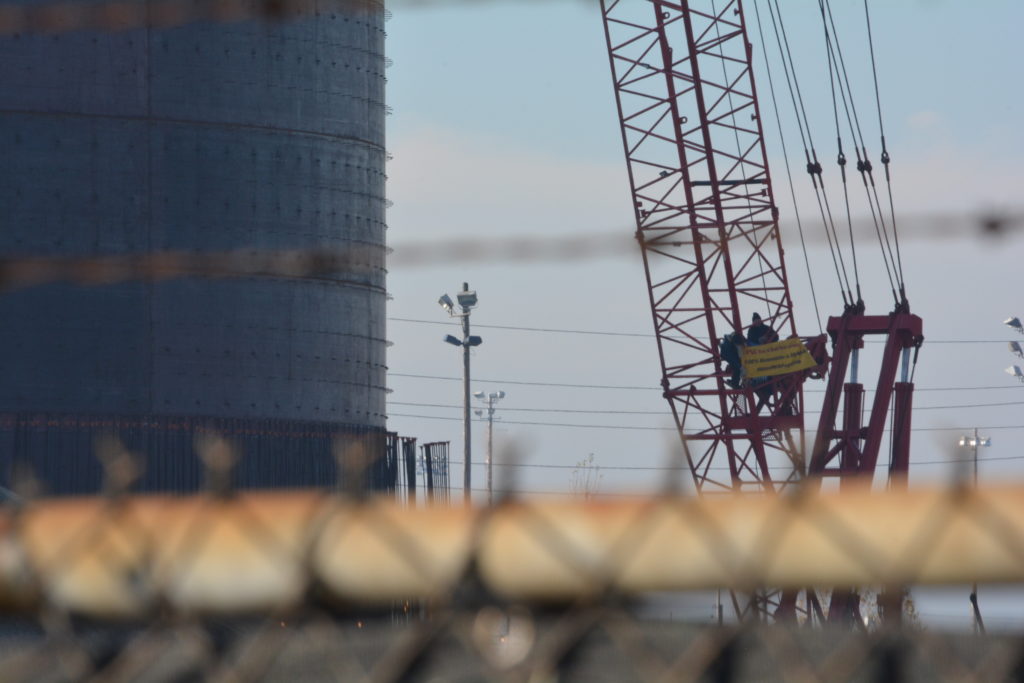
Shortly before the end of the work day, the cherry picker came up and we and our packs and gear were lowered to the ground. We were each arrested, handcuffed and escorted to the back of a police car. Our packs and gear were not arrested but remain in custody somewhere within the Tacoma Police Department.
Carlo and I were the tip of an iceberg. Our presence on the crane was the result of a team effort involving a significant number of people. All in all, it was a very good day. It kicked off a week of efforts and actions that culminated in several hundred people blocking the gates of the work site before dawn on a cold December morning. No work took place that day.
Why LNG is a bad idea
Speaking only for myself, being up on the crane felt very good. The LNG plant or, to be accurate, the methane refinery with an 8 million gallon storage tank, is an abomination. Its product is unneeded, as other, better means are available for fueling ships and vehicles and dealing with a few days of high household demand. LNG is not clean. It is taken from the ground, or fracked, piped to the refinery, processed, consumed and some of it ends up in the atmosphere. It is “at least as bad” as coal. It should be called “dirty LNG.” The plant will provide only 18 jobs. It is uninsurable, so the people of Tacoma are on the hook for much of the liability in case of an accident. The people of Tacoma, via subsidies and tax breaks, are also paying for a significant portion of the $330 million construction cost. Puget Sound Energy is owned by companies in Australia and Canada, so profits leave our country. PSE has been very disingenuous with their advertising and with significant portions of the environmental impact statement. Finally, the Puyallup tribe was not meaningfully consulted during the planning stages of the project, and their land and waters would be significantly affected. A case can be made that the plant is being constructed on Puyallup land. (Three days after Carlo and I crane sat, two ladies were acquitted of locking down on the construction site last May. The jury concluded that there was reasonable doubt as to who owned the land.)
An overriding issue for me is climate change. I have four grandchildren, and the world they will live in will be very different from the one I have known. Their faces were with me all day up on that crane. Big Oil is spending millions in the Pacific Northwest in an effort to get fossil fuels to Asia. Wind and solar are the fastest growing energy sources in the U.S., and if the fossil fuel folks could bring themselves to acknowledge reality, they would spend their billions maximizing the development of sustainable energy instead of perpetuating 20th century pollution.
Looking to the future
Carlo and I spent 24 hours in jail and, looking ahead, I may very well decide to go to trial and not plea bargain. The court will probably not allow a “necessity” defense, “necessity” meaning that all other means of stopping construction had been tried and being up on the crane was necessary in order to call attention to the abomination and halt construction. But arguing the rights of the Puyallup tribe would be allowed and would be an argument well worth making. Those rights have been seriously abused since “outsiders” arrived in what is now North America and an 1854 treaty clearly shows that the PSE LNG plant is being built on tribal land. The plant would also affect Puyallup waters and fishing rights. It may very well be worth going to trial to once again put Puyallup tribal rights to the test.
When it comes to things we care about, each of us does what we can. If Carlo and me spending a day 60 feet off the ground helped get the word out about PSE and LNG, and if those who hear about it each do what they can to stop construction and to promote the production of sustainable energy, the day will have been well worth any consequences that may follow.


